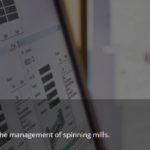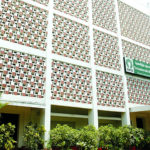HUGO BOSS confirms full-year sales and earnings forecast – substantial progress made in implementing strategic realignment
HUGO BOSS made good progress in the second quarter of 2017. Comp store sales in
its own retail business picked up significantly in all three regions, with online business
likewise growing in the second quarter. Sales in the wholesale business fell short of
the prior year due to delivery shifts as compared to the prior year. The core markets
of Great Britain and China again performed well, while U.S. business expanded for
the first time in two years. Despite increased marketing expenses and spending on
the digital transformation of the business model, operating profit remained at the
prior year’s level. On this basis, HUGO BOSS is confirming its target of stable full-year
sales and earnings in 2017.
HUGO BOSS AG August 2, 2017
At today’s Investor Day at its head office in Metzingen, the Company provides an
update on the progress that it had achieved since announcing its strategic realign-
ment last November. This is to generate sustained profitable growth from 2018. Main
topic addressed at the Investor Day is the implementation of the two-brand strategy
with the focus on BOSS and HUGO. The previously independently managed BOSS
Orange and BOSS Green lines have been integrated into the BOSS core brand.
The Spring/Summer 2018 collections which were presented recently reflect the focus
on the BOSS and HUGO brands for the first time. The increased profile of the two
brands was showcased at impressive fashion shows: HUGO in June at Pitti Immagine
Uomo in Florence, and BOSS in mid-July at the New York Fashion Week. A broad
audience was able to follow the shows via livestreams provided on the website and
on social media. Wholesale partners reacted positively to the new Spring/Summer 2018 collections.
Wholesale partners reacted positively to the new Spring/Summer 2018 collections.
Above all, they welcomed the increased clarity of the BOSS brand message. Orders
for the brand’s athleisure wear increased at double-digit rates, partly compensating
for more difficult trends in the brand’s businesswear. Orders for HUGO are up solidly
compared to the prior year period, driven by a strong double-digit increase in
casualwear in particular. Across both brands, order remained broadly stable year-
over-year, outperforming the global wholesale market.
“Our strategic realignment is beginning to take effect. Business in the second quarter was encouraging. We made considerable headway in the United States and in online business in particular,” says Mark Langer, Chief Executive Officer of HUGO BOSS AG. “We are reaffirming our full-year outlook and facing the future beyond this year with confidence. The new brand strategy has been very positively received by wholesale partners. Consequently, we have passed an important milestone in our strategic realignment.”
The first parts of the new collections will be available in stores from the end of this
year. To tie in with this, the Company is also aligning its distribution activities more
closely to customers’ needs. Thus, HUGO BOSS is widening its range in the commer-
cially important entry-level price ranges, continuing to expand its omnichannel
services and systematically investing in sales staff training and development. In
addition, it will be enhancing the shopping experience from Fall 2017 with the step-
by-step roll-out of new store concepts for BOSS and HUGO.
Against this backdrop, HUGO BOSS will be pursuing its goal of growing sales and
earnings in 2018. Looking ahead to 2019 and beyond, HUGO BOSS assumes that
sales will grow more strongly than the relevant market segment and that the
operating margin will increase again.
Q2 sales development by segment
- Sales in Europe remained stable. However, the wholesale business was burdened
by delivery shifts as compared to the prior year. In Great Britain and in the Benelux
the Group’s own retail business in particular provided for sales increases of 11%
and of 4%, respectively. Especially Great Britain benefited from solid local demand
and robust business with tourists. In contrast, sales decreased by 4% in Germany
and by 11% in France. However, in Germany the Group’s own retail business also
posted gains. - The increase in sales in the Americas is mainly due to a 2% growth in the U.S.
market. This growth was underpinned likewise by the favorable development of
the Group’s own retail business and wholesale business. In the prior year, negative
effects from measures to enhance distribution in the BOSS core brand had
burdened wholesale sales. In Canada sales were also up but they decreased in
Latin America. - In the second quarter, sales in Asia/Pacific benefited again from the ongoing
upswing on the Chinese market. Hence, sales rose by 14% in China. With double-
digit sales growth on a like-for-like basis the Chinese mainland continued to per-
form significantly better than Hong Kong and Macau. Sales were also up in Japan.
Q2 sales development by channel
- Sales development in the Group’s own retail business (including outlets and
online stores) accelerated in the second quarter. - On a comp store and currency-adjusted basis, sales increased by 3%, mainly
due to mid-single digit growth in Asia/Pacific. In Europe and the Americas sales
rose at a low single-digit rate on a comp store and currency-adjusted basis. - Overall, sales in the Group’s own retail business in Europe climbed by 4% to
EUR 246 million (Q2 2016: EUR 242 million). Sales in the Americas amounted
to EUR 100 million (Q2 2016: EUR 92 million). This is equivalent to a currency-
adjusted increase of 6%. In Asia, sales grew by 12% in local currencies to
EUR 90 million (Q2 2016: EUR 81 million). - Sales generated in freestanding stores and shops-in-shops were 2% and 7%
respectively above the prior year´s figures on a currency-adjusted basis. Outlet
sales rose by 10%. In its online business, HUGO BOSS achieved a 9% increase
in sales. Consequently, the measures focused on increasing customer footfall
and commercially optimizing the hugoboss.com website showed first signs of
success. - In the wholesale business, delivery shifts as compared to the prior year
burdened sales in Europe in particular. - At EUR 126 million, wholesale sales in Europe were 7% lower than in the prior
year (Q2 2016: EUR 136 million). In the Americas, sales on a currency-adjusted
basis fell by 3%. As in the prior year, they came to EUR 49 million (Q2 2016:
EUR 49 million). The Asia/Pacific region recorded a decrease of 1% in local
currencies with sales amounting to EUR 7 million (Q2 2016: EUR 7 million). - Sales in the license business grew substantially, rising by 27% to EUR 18 million
in particular due to higher license income from fragrances (Q2 2016:
EUR 14 million).
Q2 sales development by brand and gender
- Sales of the BOSS core brand particularly benefited from the double-digit growth
in the athleisure offering, which in 2017 is still sold under the BOSS Green brand. - A growing wholesale presence as well as growth in the Group’s own retail
business supported the sales performance of HUGO. - Menswear benefited from the favorable performance of the HUGO brand and the
BOSS Green brand line. Womenswear sales reflected declines in both BOSS and
HUGO. - The slight increase in the gross profit margin resulted from the rising share of
sales in the Group’s own retail business. Negative currency effects associated with
the devaluation of the British pound, however, offset this effect to some extent. - The unchanged strict cost management limited the increase in operating
expenses. In the course of this, reduced expansion activity and positive effects
from renegotiated leases in the Group’s own retail business ensured stable selling
expenses. An expansion of brand communication activities led to an increase in
marketing expenses of 5% as compared to the prior year. Higher personnel
expenses and higher depreciation and amortization following prior year’s IT
infrastructure investments resulted in an increase in administration expenses. - The net income arising from other operating expenses and income is related to
the store closures agreed upon as part of the Group’s catalog of measures. The
company was able to achieve more favorable conditions compared to the original
plans for the early termination of leases. Consequently, it was possible to reduce
the provisions that had been recognized in the second quarter of 2016. - EBIT and the Group’s net income were thus substantially above prior year levels.
- EBITDA before special items was unchanged over the prior-year period. The
increase in gross profit was offset by higher operating expenses.
Q2 earnings development by segment
- Segment profit in Europe was lower due to wholesale sales burdened by delivery
shifts as compared to the prior year. Operating expenses were stable. The adjusted
EBITDA margin contracted by 140 basis points to 28.6% (Q2 2016: 30.0%). - In the Americas, higher sales and a limitation of the increase in operating
expenses resulted in a higher profit. At 24.0%, the adjusted EBITDA margin was
30 basis points up on the prior-year figure (Q2 2016: 23.7%). - Segment profit in Asia/Pacific benefited from sales growth as well as a dispropor-
tionately low increase in selling and distribution expenses. At 23.3%, the adjusted
EBITDA margin was up 340 basis points on the prior year (Q2 2016: 19.9%). - Earnings in the license segment also exceeded the prior year’s level thanks to the
positive sales development.
Net assets and financial position
Change compared to June 30, 2016
- As compared to the prior year, trade net working capital (TNWC) was reduced
substantially. The positive development of inventories was primarily attributable
to declines in the Americas and in Asia/Pacific. - The increase in free cash flow over the last twelve months led to a decline in net
financial liabilities compared with the prior year.
Change compared to Q2 2016.
- The modernization of the Group’s own retail network, spending on selected new
openings and investments in the IT infrastructure formed the focus of capital
expenditure in the second quarter. The decline compared to the prior year
primarily results from a different phasing of the investment budget. - In addition to the substantial increase in earnings, reduced capital expenditure
as well as the decline in trade net working capital resulted in an increase of
free cash flow.Network of freestanding retail stores
- In the first half of the year, the number of the Group’s own freestanding retail
stores declined by a net figure of four to 438 (December 31, 2016: 442). As at
June 30, 2017, five of the around 20 store closures agreed upon in fiscal year 2016
had been completed. - In Europe, new stores were opened in Moscow and Newcastle amongst
others. There were a total of four new openings and six closures. In most cases,
the Group made use of expiring leases. - In the Americas region, the number of freestanding retail stores decreased as a
result of two closures in the United States. In comparison, there was one new
opening in Mexico. - The size of the store network in Asia/Pacific was also reduced by one store.
There were five new openings in Korea and Singapore among other places and
six closures in various markets. - Including shop-in-shops and outlets, total selling space of the Group’s own retail
business rose slightly to around 155,000 sqm (December 31, 2016: 154,000 sqm). - Selling-space productivity in the Group’s own retail business amounted to
around EUR 11,000 per sqm in the past twelve months (December 31, 2016:
EUR 10,900 per sqm).
Report on forecast changes
The Managing Board reconfirms the full-year outlook for sales and earnings.
With the stepwise introduction of a new store concept from fall 2017,
HUGO BOSS postpones part of the renovation of its own retail stores originally
planned for 2017 to the next year. Consequently, HUGO BOSS now expects
capital expenditure of between EUR 130 million and EUR 150 million in 2017
(previously: EUR 150 million to EUR 170 million).
In this connection, the Group now projects an increase in free cash flow over the
prior year to around EUR 250 million (previously: more or less stable compared to
the prior year, 2016: EUR 220 million).
A detailed presentation of the outlook for 2017 can be found in the Annual Report 2016.
HUGO BOSS AG Dieselstrasse 12 72555 Metzingen Germany Phone +49 7123 94-83377 Fax +49 7123 94-80237


